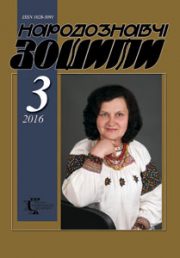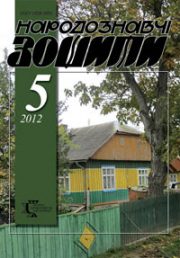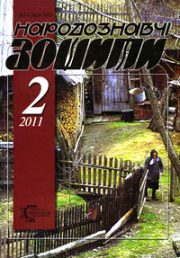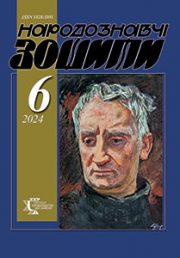The Ethnology Notebooks. 2023. № 3 (171), 665—670
UDK 7.036(477:4)”190/193″
DOI https://doi.org/10.15407/nz2023.03.665
THEORETICAL DISCOURSE OF MODERNISM: UKRAINE AND THE EUROPEAN CONTEXT
BABUNYCH Yulia
- ORCID ID: https://orcid.org/0000-0002-1947-8325
- candidate of art studies (Ph.D),
- Associate Professor of the Department of Art History and Theory,
- Lviv National Academy of Arts,
- 38, Kubiyovycha St., 79011, Lviv, Ukraine,
- Contacts: e-mail: yulia.babunych@ukr.net
Abstract. Problem Statement. The article examines the problem of the conceptual and theoretical foundation of modernism in Europe and Ukraine. At the same time, it was found that the artistic currents the first third of the 20th century had a conceptual basis, often taking shape first in manifestos, concepts, and later in real life. Art of the 20th century full of manifestos, programs, instructions, guidelines, projects. In Europe, the theoretical base of artistic movements of the first half of the 20th century. formed depending on their development. Purpose. The relevance of the problem is given by the need to study every new artistic direction or current of modernism that appeared in this period, because they were always connected with texts. In this connection, a number of texts by Ukrainian modernists were analyzed, which became the purpose of the publication. In comparison with Western Europe, the scientific basis of modernism in Ukraine was initially formed in the field of literature. This is explained by the specifics of the development of the new cultural era on our territory — at first, modernism in Ukraine conquered literature, and only later developed in art. In Ukraine, the theoretical foundation of artistic movements of the first third of the 20th century. was not clearly demarcated by directions. At this time, there is a general tendency to theorize modernism on the one hand, and reflection on various aspects of artistic creativity on the other. Ukrainian modernists did not manifest their intentions directly. It was M. Voronyi who made an attempt to structure a new period in the art and culture of Ukraine. In a somewhat vague form, there was a call to focus on Europeanness, the young generation, modernity and freedom of creativity. The theoretical work of one of the founders of Ukrainian cubofuturism in painting O. Bogomazov «Painting and Element» deserves attention. The theoretical heritage of Ukrainian cubofuturism is complemented by the «Theoretical Notes» of the outstanding sculptor and artist O. Arkhipenko. Here he records his reflections on metaphysics, space and time, the artist, criticism, philosophy and art, means of expression in sculpture and other aspects of his contemporary artistic life. Conclusion. The article also revealed and proved that the artists simultaneously acted as practitioners and theoreticians of new art, expressing their thoughts, points of view, and beliefs in critical articles, scientific reports, and books.
Keywords: the manifest, theoretical base, conception, artistic flows and directions, modernism.
Received 11.05.2023
REFERENCES
- Levchuk, L. (1997). Western European aesthetics of the 20th century. Kyiv: Lybid [in Ukrainian].
- Polishchuk, Ya. (2002). Mythological horizon of Ukrainian modernism. Ivano-Frankivsk: Lileya-NV [in Ukrainian].
- Pavlychko, S. (1997). Discourse of modernism in Ukrainian literature. Kyiv: Lybid [in Ukrainian].
- Ilnytsky, O. (1989). Shevchenko and the Futurists. Modernity (Part 5 (337), pp. 83—93). Munich [in Ukrainian].
- Shudrya, M. (2000). Rebellious «cubo-futurist» (to the 120th anniversary of the birth of O.K. Bogomazov). Ukrainian Academy of Arts (Pp. 254—263). Kyiv [in Ukrainian].
- Arkhipenko, O. (1993). Theoretical notes. Chronicle 2000, 3—4, 208—253 [in Ukrainian].
- Arkhipenko, O. (2004). «All ideas are in the universe». From theoretical notes. Museum lan, 1, 58—61 [in Ukrainian].
- Kashuba, E. (1998). The first avant-garde exhibitions in Kyiv 1908—1910. Kyiv: Triumf [in Russian].







